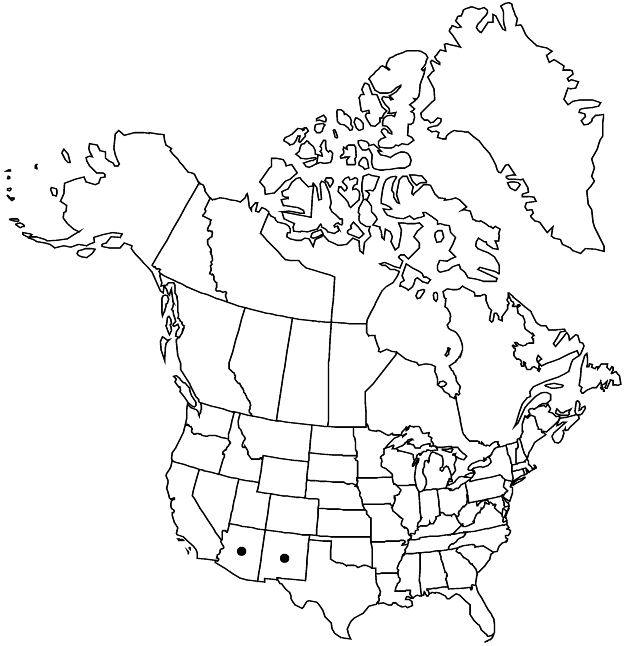Difference between revisions of "Euphorbia chamaesula"
Cent. Euphorb., 38. 1860.
FNA>Volume Importer |
FNA>Volume Importer |
||
| Line 12: | Line 12: | ||
|name=Tithymalus chamaesula | |name=Tithymalus chamaesula | ||
|authority=(Boissier) Wooton & Standley | |authority=(Boissier) Wooton & Standley | ||
| + | |rank=species | ||
}} | }} | ||
|hierarchy=Euphorbiaceae;Euphorbia;Euphorbia subg. Esula;Euphorbia chamaesula | |hierarchy=Euphorbiaceae;Euphorbia;Euphorbia subg. Esula;Euphorbia chamaesula | ||
| Line 36: | Line 37: | ||
-->{{#Taxon: | -->{{#Taxon: | ||
name=Euphorbia chamaesula | name=Euphorbia chamaesula | ||
| − | |||
|authority=Boissier | |authority=Boissier | ||
|rank=species | |rank=species | ||
| Line 51: | Line 51: | ||
|publication year=1860 | |publication year=1860 | ||
|special status= | |special status= | ||
| − | |source xml=https://jpend@bitbucket.org/aafc-mbb/fna-data-curation.git/src/ | + | |source xml=https://jpend@bitbucket.org/aafc-mbb/fna-data-curation.git/src/eaa6e58056e40c9ef614d8f47aea294977a1a5e9/coarse_grained_fna_xml/V12/V12_36.xml |
|genus=Euphorbia | |genus=Euphorbia | ||
|subgenus=Euphorbia subg. Esula | |subgenus=Euphorbia subg. Esula | ||
Revision as of 18:57, 16 December 2019
Herbs, perennial, with thick rootstock. Stems erect, branched, 40–90 cm, glabrous. Leaves: petiole 0.5–1 mm; blade elliptic to oblong, 8–20(–40) × 3–6 mm, base truncate, rounded, or attenuate, margins entire, apex obtuse or acute, sometimes slightly mucronate, surfaces glabrous; venation inconspicuous, only midvein prominent. Cyathial arrangement: terminal pleiochasial branches 3–5(–6), each 3–4 times 2-branched; pleiochasial bracts ovate-lanceolate to slightly subpandurate, similar in size or wider than distal leaves; dichasial bracts distinct, lanceolate to broadly ovate, base usually truncate to rounded or subcordate, sometimes attenuate, margins entire or slightly crenulate, apex usually obtuse to acute, occasionally acuminate; axillary cymose branches 2–8. Cyathia: peduncle 1–3 mm. Involucre turbinate or campanulate, 1.5–2.5 × 1.1–1.9 mm, glabrous; glands 4, crescent-shaped to semicircular, 0.5–0.8 × 1–1.8 mm; horns usually convergent, 0.2–0.8 mm. Staminate flowers 8–12. Pistillate flowers: ovary glabrous; styles 1–1.8 mm, 2-fid. Capsules depressed-ovoid, 4.3–5 × 5–6 mm, 3-lobed; cocci rounded, smooth, glabrous; columella 3.5–4 mm. Seeds gray to dark brown, ovoid-oblong, truncate at both ends, 2.6–3.4 × 2–2.6 mm, shallowly pitted to almost smooth; caruncle conic, 1 × 0.8 mm. 2n = 26.
Phenology: Flowering and fruiting spring–summer.
Habitat: Clearings in ponderosa pine forests, montane roadsides, dry streambeds, creek banks, sandy and gravelly soils.
Elevation: 1700–2700 m.
Distribution

Ariz., N.Mex., Mexico (Chihuahua, Sonora).
Discussion
Euphorbia chamaesula is easily distinguished from other perennial members of subg. Esula in western North America by its larger capsules and the vegetative shoots (without cyathia) that arise from the distal nodes of the stem proximal to the pleiochasia.
Selected References
None.